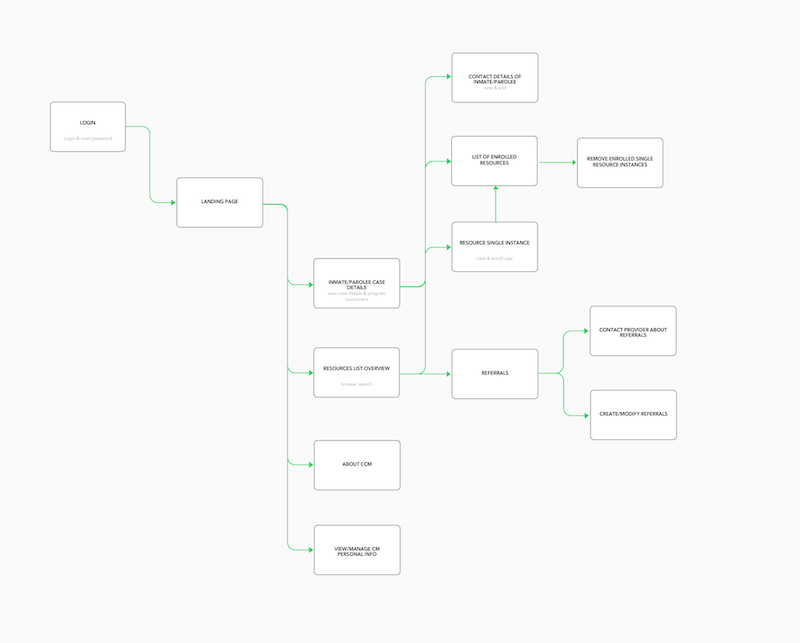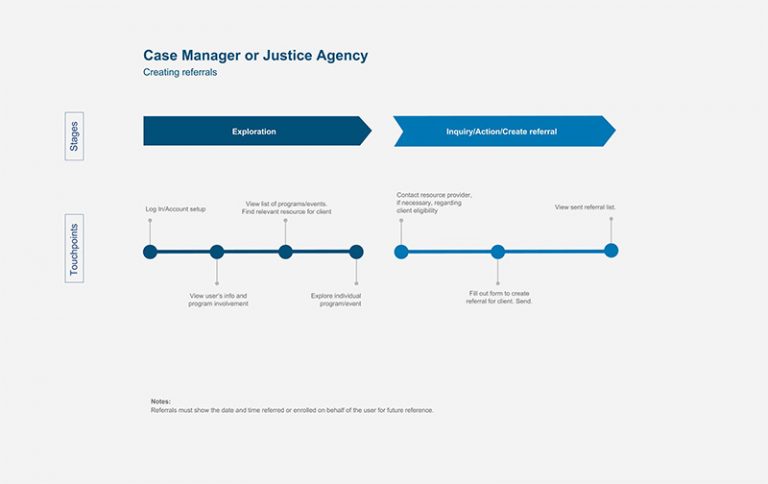Project
003
Community resources app
Reducing recidivism through a community support system
Between 70-80% of prisoners will be arrested again. By providing them with options for community-engagment and opportunities for education and work, their chances of staying free are increased exponentially. (Company name redacted) was tasked to build a web app that would allow inmates to search and sign up for community services — providing a conduit between the inmates and services within the community such as education, food banks, social workers, etc. Also the prison staff and case workers need to have oversight of where those who are incarcerated may be at a certain time and which community offerings they are involved in.
Info
Role
UX/UI Designer as part of a small, cross-functional delivery team
Timeline
6 months
Tools
Figma
Overview
Problem
How might we support inmates through providing access to community services?
Outcome
Facilitating connections for community services and the incarcerated through a mobile app by providing simple search functionality and a personalized experience.
Research and Findings
Our small cross-functional team held workshops with the client stakeholders and futuer users to better understand the needs of the different users and business requirements. From these discovery sessions we worked to understand:
- Data constraints and technical requirements
- Various user types and their associated roles, attributes, and needs
- How these user types, and their actions, connect to each other

The full picture
Understanding the complexity of system permissions to allow these community connections to happen was crucial — providing opportunities for connection while allowing monitoring from staff. Understanding these layers of access was key to success. Here is a rough draft of a user flow I created to help us think through one user persona's access.

Understanding touchpoints
An early mapping of a case manager's touchpoints that I created with the process of an inmate and community org's connection. This mapping iterated over time in conjunction with discovery through stakeholder workshops.
The Work
Features of focus (narrowed down for this case study)
- Discoverability: A simple and intuitive search experience for inmates to find community services.
- Flexibility: A flexible foundation for the community organizations to display their offered services.
- Personalization: A personalized experience for inmates to view and manage their involvement with community partners.
Priority One
A simple and intuitive search
Our first key focus was to provide users a cognitively easy to understand search experience. They needed to be able to browse by category, search and filter within their findings, and save listings.
Below is a laptop size design for the resource detail view. This design illustrates our focus on providing info to users in an easily digestible layout using scannable sections, highlighting areas with icons, and clean typography. Also users are able to save this resource to review later.

Priority Two
Flexibility, modularity, & reusability
Using Figma we built out a system of components that accounted for the dynamic nature of content, use cases, and system access. This type of thinking for our card component needed to be flexible depending on a few different views and use cases. Using slighly different card layouts and responsive behavior we achieved a flexible solution.

Priority Three
Personalization
Personalized views for all roles was a crucial building block. Seen in this mockup an inmate or parollee user can access their saved programs, events, and connections to community resources. This allows them a holistic view of the community plan that they've built with a case worker.

The Outcome
By providing open access to community offerings, we were able to allow the incarcerated and formerly incarcerated the highest chances of success.
After the 6 months of my involvement on the project, the team continued to evolve and release features. Due to an NDA I cannot show the final app.
Going Forward
To continue iterating and improving on the delivery, measuring success of the app will look reflect:
- Task Success: the number of inmates signing up for services through the app
- Engagement and happiness: utilize surveys and conduct interviews with inmates, prison staff, and community organizations to understand pain points of the app and ways to add value going forward.
